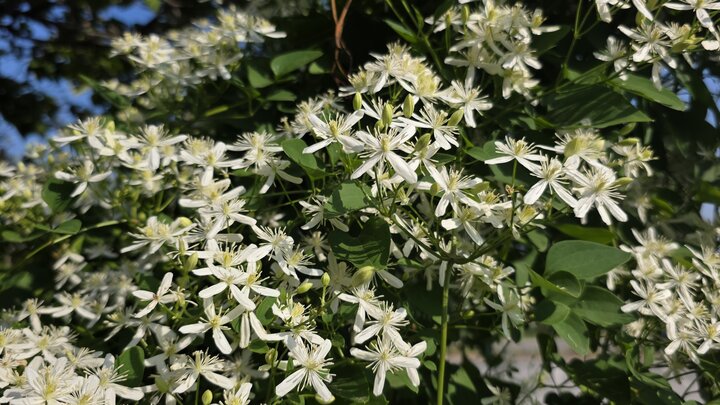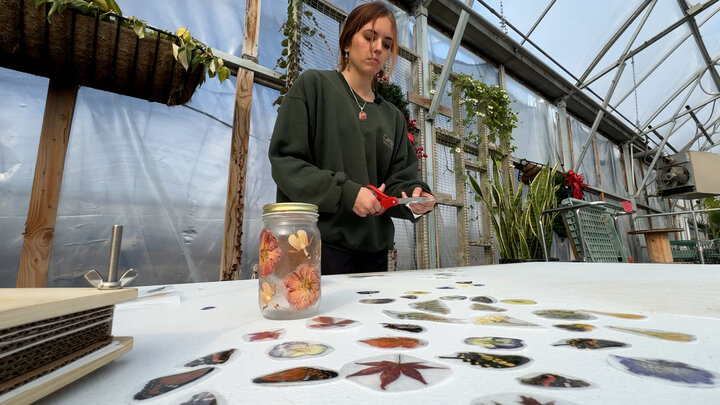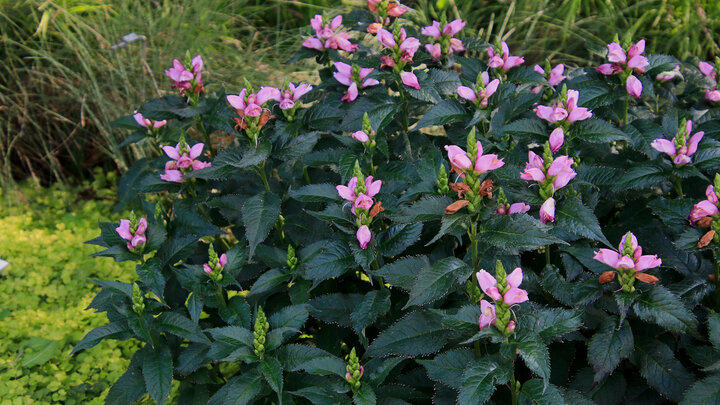Sweet autumn clematis (Clematis terniflora) is in full bloom right now, its fragrant white flowers drawing in pollinators of all kinds. Though long admired in gardens, this Asian import is raising concerns:
- More than a dozen states along the Atlantic corridor now list it as invasive.
- In Nebraska, it has been spotted in open areas of Douglas County.
- While not officially listed as invasive at the state or county level, the Nebraska Invasive Species Council recognizes it as such.
A Native Alternative: Woodbine (Clematis virginiana)
For gardeners who want to replace C. terniflora, the native woodbine (C. virginiana) is a strong option.
- Produces clusters of fragrant white flowers from late August through September.
- Grows vigorously and spreads by both seed and underground shoots—so give it room to roam.
How to Tell Them Apart
Though flowers look similar, leaves hold the key:
- C. virginiana (native): Leaves in groups of three, with jagged/toothed edges. (Can resemble poison ivy.)
- C. terniflora (invasive): Leaves in groups of three to five, with smooth, un-toothed margins.

The Wild Card: Clematis paniculata
Another plant, C. paniculata from New Zealand, has also been sold in the U.S. as “sweet autumn clematis.”

- Flowers: Separate male and female flowers with six sepals.
- Leaves: Thick, leathery, dark green foliage.
- Unlike C. terniflora, it is not considered invasive.
- However, its close resemblance makes misidentification easy—leading to unintentional planting of the wrong species.
Take-Home Tip
When in doubt, check the leaf edges:
- Jagged edges = Native (C. virginiana) → the safer choice.
- Smooth edges = Invasive (C. terniflora) → avoid planting.




